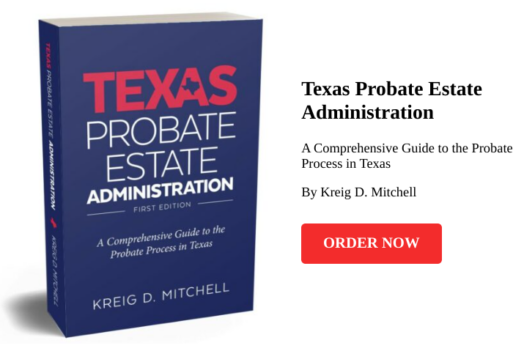A transfer-on-death (TOD) deed, commonly known as a beneficiary deed, is an important tool in Texas estate planning. It allows you to transfer ownership of certain types of property upon your death to someone else without going through the probate process.
The TOD deed has become increasingly popular in recent years due to its simplicity and cost savings. In this blog post, we will discuss what a TOD deed is, the requirements for completing one, and why it’s such an invaluable tool for those who want to make sure their assets are distributed according to their wishes after their death.
What Are the Requirements of a Transfer-on-Death Deed?
The deed must be signed and dated by the owner of the property and must be witnessed by two people who are not related to the owner or the person to whom the property is being transferred. Additionally, it must be notarized by a notary public.
The deed must be filed with the county clerk in the county where the property is located, within 30 days of the owner’s death. If the deed is not filed within this time frame, it is void and the property will pass to the owner’s heirs according to Texas probate law.
Restrictions of a Transfer-on-Death Deed
Once filed, the deed becomes a legal document and cannot be revoked by the owner. However, if the owner sells or conveys the property before their death, then the deed is no longer valid and ownership of the property will pass to whomever they conveyed it to.
The person named as recipient in a Texas Transfer-on-Death Deed does not have any rights to the property while the owner is alive. If you are named as a recipient in someone’s Texas Transfer-on-Death Deed, make sure that you understand what this means and that you are comfortable with it before agreeing to it.
How to Complete a Texas Transfer-on-Death Deed
To complete a Texas Transfer-on-Death Deed, follow these steps:
1. Fill out the deed. Include the following information:
- Your name and address
- The name and address of the person or entity you are transferring the property to (the “beneficiary”)
- A description of the property you are transferring
- The date of the deed
2. Sign the deed in front of a notary public.
3. Give the deed to the beneficiary. You do not need to file it with the county clerk’s office.
4. Upon your death, the beneficiary must provide proof of your death and file the deed with the county clerk’s office in the county where the property is located.
Once the deed is filed, ownership of the property transfers to the beneficiary. The deed must be recorded with the county clerk in order for the transfer of ownership to be effective upon the owner’s death. If the property is subject to a mortgage or other lien, that debt must be paid off before the beneficiary can take ownership of the property free and clear.
What Property Can Be Transferred with a Transfer-on-Death Deed?
The property conveyed via a TODD can be either residential or commercial real estate, including but not limited to:
- Single family homes
- Condominiums
- Vacant land
- Rental property
Special Rules for Co-Owned Property in Texas
When two or more people own property together in Texas, there are certain rules that apply to the transfer of ownership upon the death of one of the owners. These rules are designed to protect the surviving owner or owners from having to go through a lengthy and expensive probate process in order to retain ownership of the property.
In order for a Transfer-on-Death Deed to be valid in Texas, it must meet all of the following requirements:
1. The deed must be in writing and signed by the owner or owners of the property.
2. The deed must be notarized by a licensed notary public.
3. The deed must be filed with the county clerk where the property is located.
4. The deed must contain the legal description of the property as well as the names and addresses of the transferee or transferees.
5. The deed must state that it is revocable at any time by the owner or owners prior to their death.
If you have any questions about whether a Transfer-on-Death Deed is right for your situation, you should consult with an experienced estate planning attorney in your area.
How to Name Beneficiaries on a Texas Transfer-on-Death Deed
If you own a home in Texas and want to name a beneficiary who will receive the property upon your death, you can do so by completing a Texas Transfer-on-Death Deed.
To complete a Texas Transfer-on-Death Deed, you will need the following information:
- Your full name and address
- The full name and address of the person you are naming as your beneficiary
- A description of the property you are transferring
- The date of the deed
- Your signature
Once you have gathered this information, you can fill out the Texas Transfer-on-Death Deed form. This form is available online from the Texas Comptroller’s office. Once you have completed the form, you will need to have it notarized.
After the deed has been notarized, it should be recorded with the county clerk where the property is located. You will need to provide the clerk with a copy of the deed, as well as any recording fees that may be required. Once the deed has been recorded, it is effective immediately and does not need to be filed with your last will and testament.
How to Revoke or Cancel a Transfer-on-Death Deed
If you change your mind after completing a Texas Transfer-on-Death Deed, you can revoke or cancel the deed. To do so, you must notify the beneficiary in writing that you are revoking or cancelling the deed. You must also record a revocation or cancellation of the deed with the county clerk’s office where the original deed was recorded.
Pros and Cons of Using a Transfer-on-Death Deed
TOD deeds are an easy and inexpensive way to avoid probate, but there are some potential drawbacks to consider before using one.
PROS:
1. Avoid Probate: When you use a TOD deed, your property will transfer to your beneficiary outside of probate, which can be a time-consuming and expensive process.
2. Flexibility: You can change the beneficiary of your TOD deed at any time prior to your death, simply by completing a new deed with the updated information.
3. Control: With a TOD deed, you retain control of your property during your lifetime. You can sell or mortgage the property as you see fit, and even revoke the deed entirely if you change your mind about using one.
CONS:
1. Limited Scope: Not all types of property can be transferred using a TOD deed – only certain types of real property, such as land or a house. Personal property, such as cars or furniture, cannot be transferred using this method.
2. Possible challenges: If your beneficiaries are not in agreement about who should receive the property after your death, they may challenge the validity of the TOD deed in court. This could delay or even prevent the transfer of ownership from taking place
3. Possible tax implications: Depending on the value of your property, your beneficiary may be responsible for paying inheritance or estate taxes, which could reduce the amount they receive.
Conclusion
Completing a Texas Transfer-on-Death Deed is an easy way to ensure that your property will be passed on to your loved ones without the hassle of probate. While there are certain legal requirements, such as having two witnesses sign the deed and filing it with the county clerk’s office, none of these steps should take much time or money and should not deter you from taking advantage of this simple estate planning tool. With just a few simple steps, you can make sure that your legacy will live on in all those whom you love and cherish.
Do you need an Experienced Probate Attorney to help?
When a person dies, their assets are generally transferred to their beneficiaries through probate. Probate is the legal process of distributing a person’s assets after they die. If the deceased person had a valid will, the probate court will appoint an executor to carry out the instructions in the will. If the deceased person did not have a will, the probate court will appoint an administrator to distribute the assets according to state law.
The probate process can be complicated and time-consuming, especially if there is disagreement among the beneficiaries about how the assets should be divided. An experienced probate attorney can help you navigate the probate process and ensure that your rights are protected.
Our Houston Probate Attorneys provide a full range of probate services to our clients, including helping with disputes between heirs. Affordable rates, fixed fees, and payment plans are available. We provide step-by-step instructions, guidance, checklists, and more for completing the probate process. We have years of combined experience we can use to support and guide you with probate and estate matters. Call us today for a FREE attorney consultation.
Disclaimer
The content of this website is for informational purposes only and should not be construed as legal advice. The information presented may not apply to your situation and should not be acted upon without consulting a qualified probate attorney. We encourage you to seek the advice of a competent attorney with any legal questions you may have.
Don't miss out, get a copy today!













